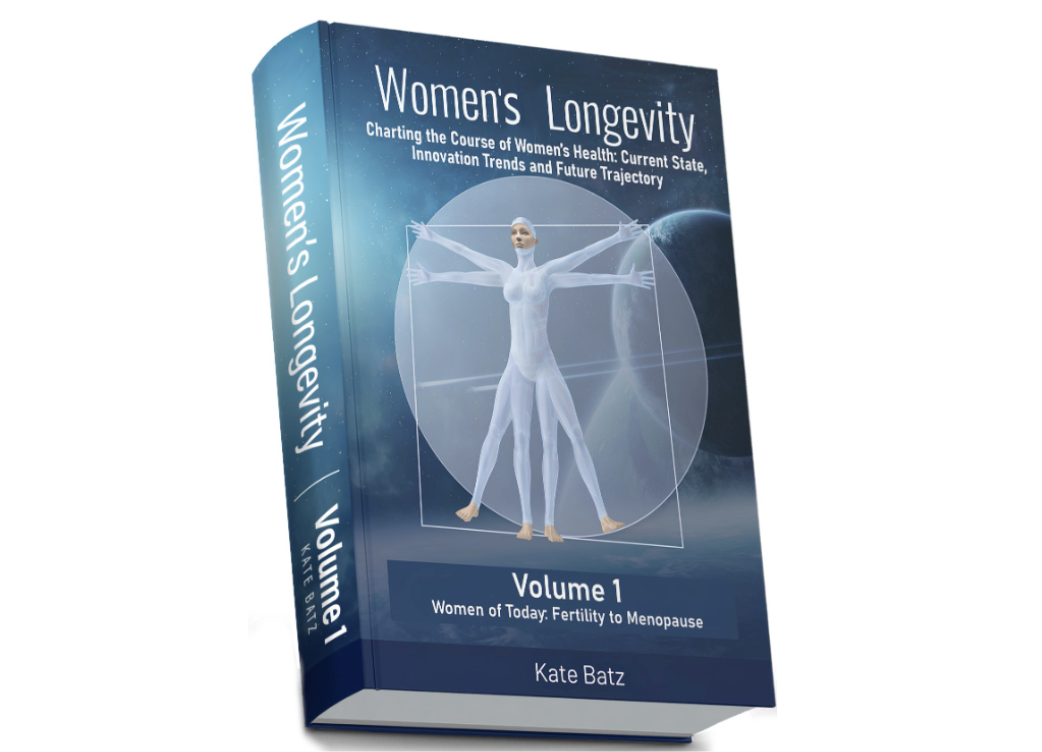Bridging the Gender Gap in Longevity Science
- Women’s Longevity

- Sep 22
- 3 min read
In the Women’s Longevity book series, Kate Batz, Managing Partner at Deep Knowledge Group, tackles one of the most pressing issues in healthcare today: the gender gap in longevity science. Despite women’s longer life expectancy, their healthspan—the number of years lived in good health—is often far shorter than men’s. Women experience more years of aging-related diseases, frailty, and reduced quality of life, yet the scientific community has largely overlooked the unique health needs that arise specifically for women as they age.

This underrepresentation in longevity research not only impacts women’s well-being but also represents a glaring blind spot in the healthcare industry. The result? Women are not getting the personalized treatments, interventions, and innovations they deserve to extend both their lifespan and healthspan. Women’s Longevity aims to change that, offering a bold and comprehensive blueprint to address this gap.
The Longevity Paradox: Women Live Longer, Yet Age Poorly
Women, on average, outlive men by several years. However, these additional years are often fraught with chronic illness, mental health struggles, and functional decline. Research shows that while women generally live longer, they experience more time spent in poor health due to conditions like osteoporosis, heart disease, and dementia.
The medical and economic toll of this discrepancy is significant. Yet, despite this undeniable issue, most longevity science and healthcare solutions are gender-neutral, with little to no focus on the specific needs of women. Menopause, a natural and inevitable stage for every woman, remains under-researched and under-treated in mainstream medicine. It is a phase that brings profound hormonal shifts affecting a woman’s physical and emotional health, yet only a small fraction of OB-GYN programs in the U.S. address menopause in depth.
Women’s Longevity: The Call for Change
Women’s Longevity delves into these issues, combining groundbreaking data with actionable solutions. Through the lens of biomarker research, personalized medicine, and the rise of FemTech (technology driven by women’s health), Kate Batz illuminates the path forward. The book goes beyond merely describing the problem—it lays out a roadmap to fix it, calling on the healthcare system, policymakers, and innovators to prioritize women’s health in longevity research.
The books make the case that gender-specific research is not just important—it’s essential. There is an urgent need to focus on understanding how women age differently, including the hormonal, genetic, and environmental factors that shape women’s health. Women’s Longevity highlights innovations in FemTech, such as wearables, AI-powered diagnostics, and personalized health solutions, that are helping to close the gap in care and offer women the tools to manage their health at every stage of life.
The Power of FemTech: Revolutionizing Women’s Health
One of the most exciting developments in addressing the gender gap in longevity science is the FemTech industry. Women-specific health technologies are transforming the way we think about aging, offering tailored, tech-driven solutions for managing menopause, fertility, mental health, and more. In Women’s Longevity, Kate Batz explores the profound role FemTech is playing in the longevity revolution, from fertility apps to hormonal health trackers and AI-powered health platforms.
FemTech has already begun to reshape how women manage their health, empowering them with the tools to take control of their own aging processes. These innovations offer real-time health data, provide insights into hormonal fluctuations, and even help detect early signs of age-related diseases. For women, this means better prevention, faster diagnoses, and more effective treatments—all of which contribute to a longer, healthier life.
The Global Imperative for Women’s Longevity
The need to focus on women’s health is not just a medical or scientific issue—it’s a global imperative. From workplace absenteeism due to menopause symptoms to the rising healthcare costs associated with age-related diseases like osteoporosis and cardiovascular disease, the economic burden of women’s health is staggering. Yet, it’s also an opportunity—by investing in women’s health, particularly in the fields of biomarker research, AI, and personalized treatment, societies can reduce healthcare costs and improve productivity, ensuring women live better, longer lives.
Women’s Longevity urges a global realignment of healthcare priorities, advocating for the integration of gender-specific research into mainstream healthcare policies. The book calls for more investment in women-focused innovations, as well as policies that support women throughout their aging journey, from fertility to menopause to post-menopause care.
A Call to Action
Women’s Longevity is not just a call for awareness—it’s a call to action. It’s time to invest in women’s health and longevity, not just as a matter of equity but as a smart economic and healthcare strategy. By supporting FemTech innovations, funding women’s health research, and adopting gender-sensitive healthcare policies, we can create a world where women live not just longer, but healthier, happier, and more fulfilling lives.
As you read Women’s Longevity, you’ll find yourself inspired and informed, equipped with the knowledge to advocate for change, invest in innovation, and make smarter healthcare decisions for women. It’s time for women’s longevity to be a priority—and the time for change is now.

Order Volume 1 of Women’s Longevity: Women of Today: Unlocking Longevity and Vitality



Comments